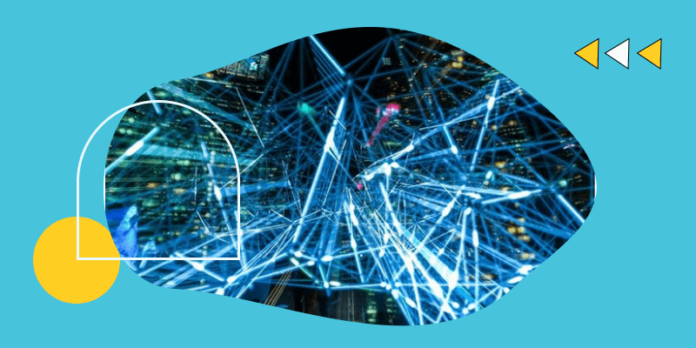If you know a bit about Artificial Intelligence (AI), you probably have heard the term ‘Deep learning’ — a subset of machine learning, which in turn is a subset of AI. Deep learning uses a computer-based simulation of neural networks found in the human brain to learn from data fed while in training.
Later, while in production, it analyzes data to make faultless classifications, intelligent decisions and accurate predictions. If you ever wondered how your TV remote responds to your voice or how self-driven cars work, you now know the name of the science behind it.
Over the last decade, deep learning has exploded to become one of the fastest-growing and most exciting areas of interest in computer programming. From near zilch in 2014, the number of deep learning jobs in America has risen to over 50,000. But problems facing the domain persist:
- Low quality of data: Deep learning, by its very nature, demands large quantities of high-quality data to train the deep learning algorithms correctly. While plenty of data can be purchased or scraped online, the data is often low in quality. This becomes a problem because low-quality data may easily lead a deep learning algorithm to recognize a gorilla as a man or inspire a car to drive off the cliff.
- Lack of qualified personnel: Even as the number of programmers taking to deep learning jobs has snowballed over the last decade, qualified personnel are not nearly enough. Newcomers to deep learning need a lot of time to find their feet. Deep learning models often thus get implemented incorrectly because an unqualified person worked on them.
- Lack of production-level AI solutions: As large sums flow into investment in the AI industry, the demand for AI solutions has skyrocketed. With the lack of adequate high-quality data and qualified personnel, businesses struggle to meet the ballooning demand for the development of production-level AI solutions.
The Future of AI Development
Deep learning powers many AI functions:
- Automation.
- Performing analytical tasks without human intervention.
- Performing physical tasks where human action could be hazard-prone.
Deep learning algorithms silently infuse our lives with the perks of AI — voice recognition, speech transcription/translation, handwriting recognition, board games, self-driving cars.
AI also works in subtler ways cloaked backstage. Business websites use deep learning to decide what online ads to show you, banks use it to assess loan/bankruptcy risks and confirm caller identity when you call customer support, credit-card companies use it for fraud detection, hospitals use it to detect, diagnose, and treat diseases.
If your business is looking to develop or deploy deep learning models, you might like to use Spell.ml and AI models serving for deep learning. Capable of working with all significant clouds (Microsoft, Amazon, Google), Spell DLOps provides ready tools for various tasks: image recognition (computer vision), voice recognition, natural language processing.
As deep learning evolves, AI applications derived from deep learning will further impact your life. The birth of quantum computers is likely to take deep learning models to new heights. Besides more complex routines and faster execution, quantum machines could help deep learning with smaller training data set requirements and perhaps even the tolerance of low-quality data.
But deep learning will never be a magic wand for all problems that thwart mankind. Because of theoretical as well as practical limits involved, the scope of deep learning models will remain restricted by the boundaries of its science.
Promising Industries For DL
With the soaring threats from infrastructure hacking, malware and ransomware attacks of late, the cybersecurity industry is perhaps the foremost candidate to benefit from deep learning potentially. Among other benefits, deep learning models can assist in Intrusion Detection and Prevention Systems (IDS/IPS), spam and malware detection, and network traffic analysis.
The energy industry could gain from deep learning algorithms too. Because energy has to be produced at the same time it is consumed, accurately predicting energy demand becomes critical. Deep learning can correlate complex patterns in interwoven factors impacting energy demand: day of the week, time, wind conditions, solar radiation, major sports events, demand history, air temperature, moisture and pressure.
Deep learning-based Hotel Property Management Systems can assist hotels with automating the day-to-day tasks of running a hotel. These systems can be scaled to any type or size of the hotel. With deep learning, hotels could also tailor their marketing campaigns based on flight schedules and fares.
The manufacturing industry gains on many fronts with deep learning: smart maintenance, improved product development and quality assurance, robots to handle complicated and dangerous processes, supply chain management, logistics. Deep learning in the manufacturing industry is already happening, with Siemens and General Electric taking big strides in AI-based manufacturing.
Challenges to Deep Learning/AI
Deep learning revolves around large amounts of high-quality data. That will always remain a challenge that will have to be met when developing deep learning models.
Two domain-specific specific problems apply to deep learning. First, deep learning cannot understand perspectives or abstract ideas like justice, democracy, faith, etc. The second is the ‘black-box’ problem: unlike a normal program that can be debugged to find what caused a faulty decision, deep learning is opaque. If a deep learning machine makes a mistake, you cannot pinpoint the cause of the error.
While deep learning could solve cybersecurity challenges of the future, deep learning systems will remain prone to the insider threat — when your employee, rather than an intruder, compromises your assets.
Deep learning systems also need periodic retraining. Because there will always be deficiencies in prior training data compared to the current environment, training a deep learning system will never be a one-time exercise.
A Cause for Hope
Despite its roots dating way back to the 1940s, deep learning is still in a stage of infancy. The good part is that immense advances have been made over the last decade, and the future promises to usher in the exponential growth of this technology. If a deep learning model does not yet exist for your project, you probably just have to wait a little longer.








